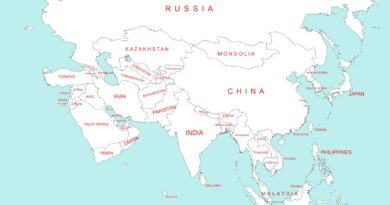Summer Solstice
Context:
June 21- this day is referred to as the summer solstice, the longest day of the summer season. It occurs when the sun is directly over the Tropic of Cancer.
Contents
What is Solstice?
- A year is usually divided into summer, winter, spring and autumn seasons.
- Seasons change due to the change in the position of the earth around the sun.
- Summer Solstice: The longest day and the shortest night. It occurs on 21st June in the northern hemisphere.
- The word solstice is derived from the Latin sol (“sun”) and sistere (“to stand still”), because at the solstices, the Sun’s declination appears to “stand still”; that is, the seasonal movement of the Sun’s daily path (as seen from Earth) pauses at a northern or southern limit before reversing direction
- A solstice is an event that occurs when the Sun appears to reach its most northerly or southerly excursion relative to the celestial equator on the celestial sphere.
- Two solstices occur annually, around June 21 and December 21. In many countries, the seasons of the year are determined by reference to the solstices and the equinoxes.
- The term solstice can also be used in a broader sense, as the day when this occurs. The day of a solstice in either hemisphere has either the most sunlight of the year (summer solstice) or the least sunlight of the year (winter solstice) for any place other than the Equator. Alternative terms, with no ambiguity as to which hemisphere is the context, are “June solstice” and “December solstice”, referring to the months in which they take place every year.

What is Summer Solstice?
- It is the longest day and shortest night of the year in the Northern Hemisphere.
- During this, countries in the Northern Hemisphere are nearest to the Sun and the Sun shines overhead on the Tropic of Cancer (23.5° North).
- At latitudes of 23.5° are the Tropics of Cancer and Capricorn, north and south of the Equator.
- At 66.5° are the Arctic and Antarctic Circles, to the north and south.
- Latitudes are a measure of a location’s distance from the Equator.
- During the solstice, the Earth’s axis — around which the planet spins, completing one turn each day — is tilted in a way that the North Pole is tipped towards the sun and the South Pole is away from it.
- Typically, this imaginary axis passes right through the middle of the Earth from top to bottom and is always tilted at 23.5 degrees with respect to the sun.
- At the Arctic Circle, the sun never sets during the solstice.
What is Winter Solstice?
- December 22, is Winter Solstice, the shortest day of the year in the Northern Hemisphere
- It is the day when the North Pole is most tilted away from the Sun.
- In the Southern Hemisphere, conversely, today is Summer Solstice — in places like Australia, New Zealand, or South Africa, December 22 is the year’s longest day.
- This situation will be reversed six months after— on June 21/22, the Northern Hemisphere will see the Summer Solstice when the day will be the year’s longest.
- The Earth’s axis of rotation is tilted at an angle of 23.5 degrees away from the perpendicular.
- This tilt — combined with factors such as Earth’s spin and orbit — leads to variations in the duration of Sunlight that any location on the planet receives on different days of the year.
What is Equinox?
Equinox refers to a day with an equal duration of day and night. We have two equinoxes in a year which are:
- Spring equinox on March 20
- Autumnal equinox on September 22
Source: Indian Express
Discover more from Simplified UPSC
Subscribe to get the latest posts sent to your email.


